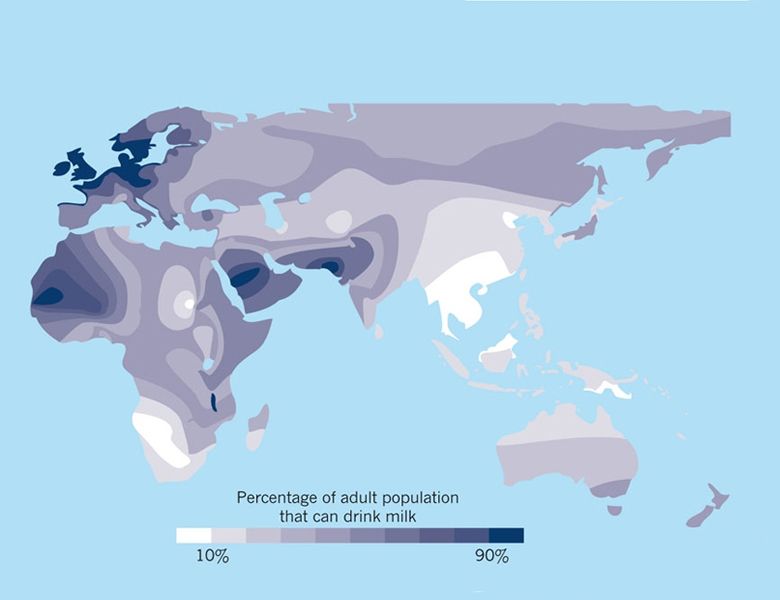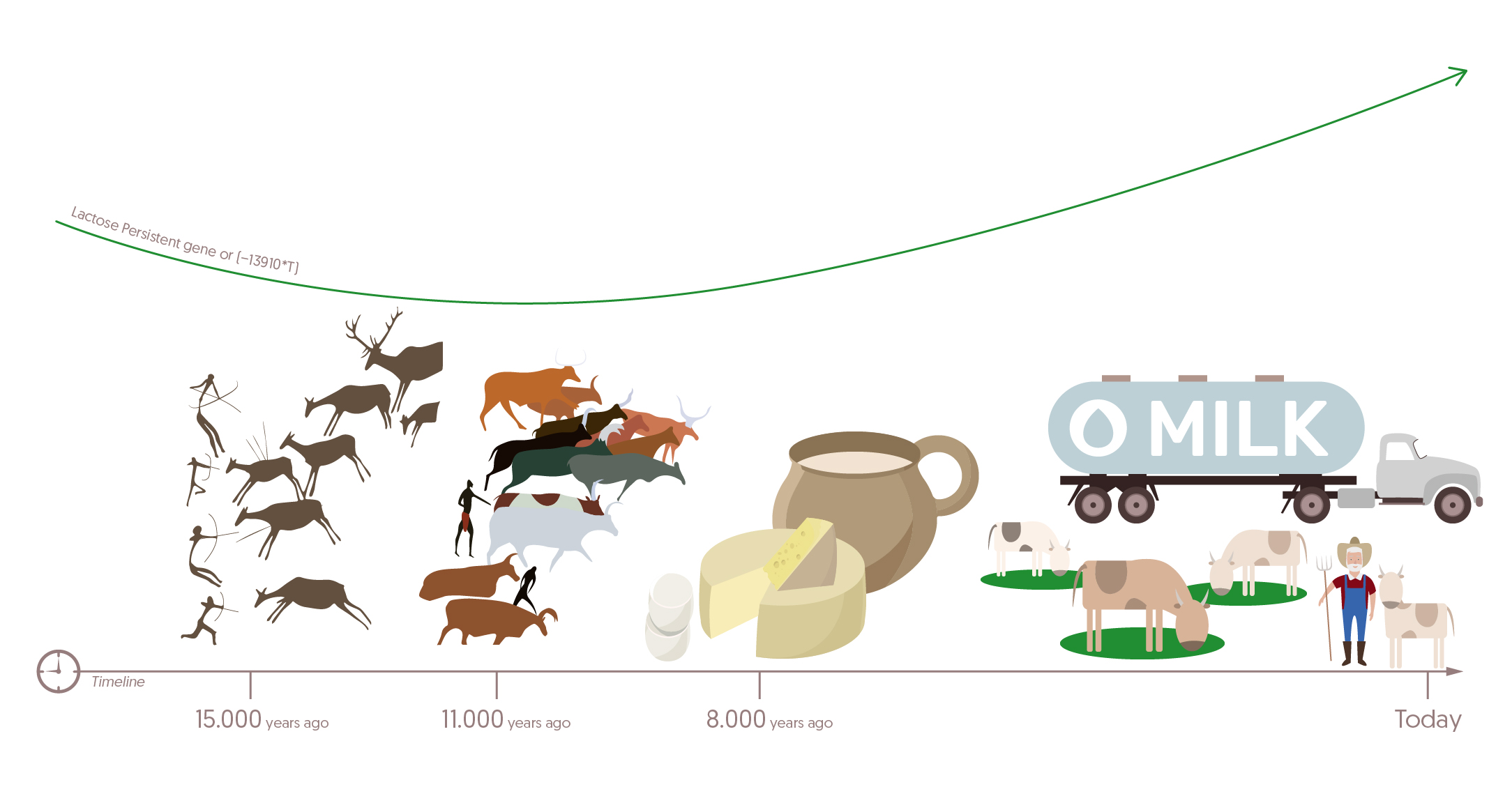The mystery of lactase stability in the world

- | آتاماد | News |
- 83
Although ancient Europeans could not digest milk, they raised dairy cows. Many studies of ancient pottery and DNA challenge popular theories of evolution for the persistence of lactase.
Over the past 10,000 years, populations living far apart in Europe, Africa, South Asia, and the Middle East separately acquired a key genetic change: the ability to digest the milk sugar lactose as adults. Researchers thought that people with this ability lived in dairy farming environments, had proper nutrition, and had more children; As a result, they spread genetic changes. But in recent years, unexpected findings have challenged this story.
Most people in the world lose the ability to digest lactose after childhood. But in herding populations, culture and DNA are said to have gone hand-in-hand to create mutations that allow people to digest milk as adults. This ability, known as lactase persistence, gives its carriers an advantage, enabling them to access a rich source of fat and protein throughout the year. Over time, dairy evolved along with lactose adaptation, explaining why it is so common in herd populations in Europe, East and North Africa, and the Middle East.
A study on the ancient Mongols
Evidence has recently been found in Mongolia that shows that the majority of people consume dairy products, while 95% of the population is genetically allergic to lactose. You might ask yourself, how can you consume dairy despite not having the gene to digest it? Advanced study of ancient DNA and protein helps solve this evolutionary puzzle.
More than 3 thousand years ago, herds of horses, sheep, cows, or buffaloes were scattered in the plains of Mongolia. The Mongols honored their presence by burying the bones of animals with their own bones. An advanced analysis of deposits on ancient teeth suggests that the Mongols also milked their animals. Milking an animal may not seem surprising, but it is interesting to know that DNA analysis of the same ancient people shows that they could not digest lactose. These findings present a mystery that challenges the common story about how lactose tolerance evolved. We thought we knew everything about the evolution of lactose, but we got more data and realized how naive we were!
Modern Mongolians digest dairy by using bacteria to digest lactose for them, turning milk into yogurt and cheese. Ancient pastoralists may have adopted similar strategies. Control and manipulation of microbes is core to this whole transformation.

Natural selection pressure on lactase persistence
A major archaeological study of dairy farming and dairy production has just been published, which claims that across Europe, people were consuming dairy products for thousands of years before adult lactase persistence became widespread. It is thought that disease and famine may have turned lactose intolerance from a nuisance to a fatality, leading to strong natural selection for this digestive trait.
"This study changes our long-term understanding of the relationship between milk consumption and the persistence of lactase," said by an archaeologist at the University of York. It is difficult to estimate ancient population fluctuations and understand what led to this evolution.
In new studies, archaeologists have found evidence of milk on about 7,000 ancient pottery sherds at 554 sites in Europe dating back 9,000 years. By analyzing the fats preserved in the pottery, they trace the rise and fall of dairy farming across Europe, and then, with the help of ancient DNA experts, match their findings with traces of lactase persistence in 1293 human genomes published from the same regions, and compare them.
Fluctuations in dairy consumption over time did not correspond to changes in lactase persistence. Instead, the researchers found what they thought were famine and disease signals best-matched lactase stability mutations in ancient DNA.
Lactose intolerance can be extremely dangerous for sick or malnourished people says the co-author of Human Evolutionary Genetics at University College London. One of the biggest causes of death in the world is loss of fluids in severely malnourished people, on the other hand, a person who consumes milk usually suffers from bloating and diarrhea, so if a person is malnourished and has diarrhea, he is in danger.
What is the key force of lactase persistence?
From the research results, we find that dairy production alone is not the key force in the expansion of the lactase persistence gene, the natural selection pressure only becomes stronger when it is combined with disease and starvation.
The findings of this study are an "exciting avenue" for ongoing research. However, estimating ancient population fluctuations and understanding what led to them is difficult.
References:
https://www.science.org/content/article/ancient-europeans-farmed-dairy-couldn-t-digest-milk
https://www.science.org/content/article/how-can-you-eat-dairy-if-you-lack-gene-digesting-it-fermented-milk-may-be-key-ancient
GET IN TOUCH
Copyright © 2023 Atamad.com All right reserved
Website design and SEO services by Seohama team – Web hosting by Sarverhama
Copyright © 2023 Atamad.com All right reserved
Website design and SEO services by Seohama team – Web hosting by Sarverhama








